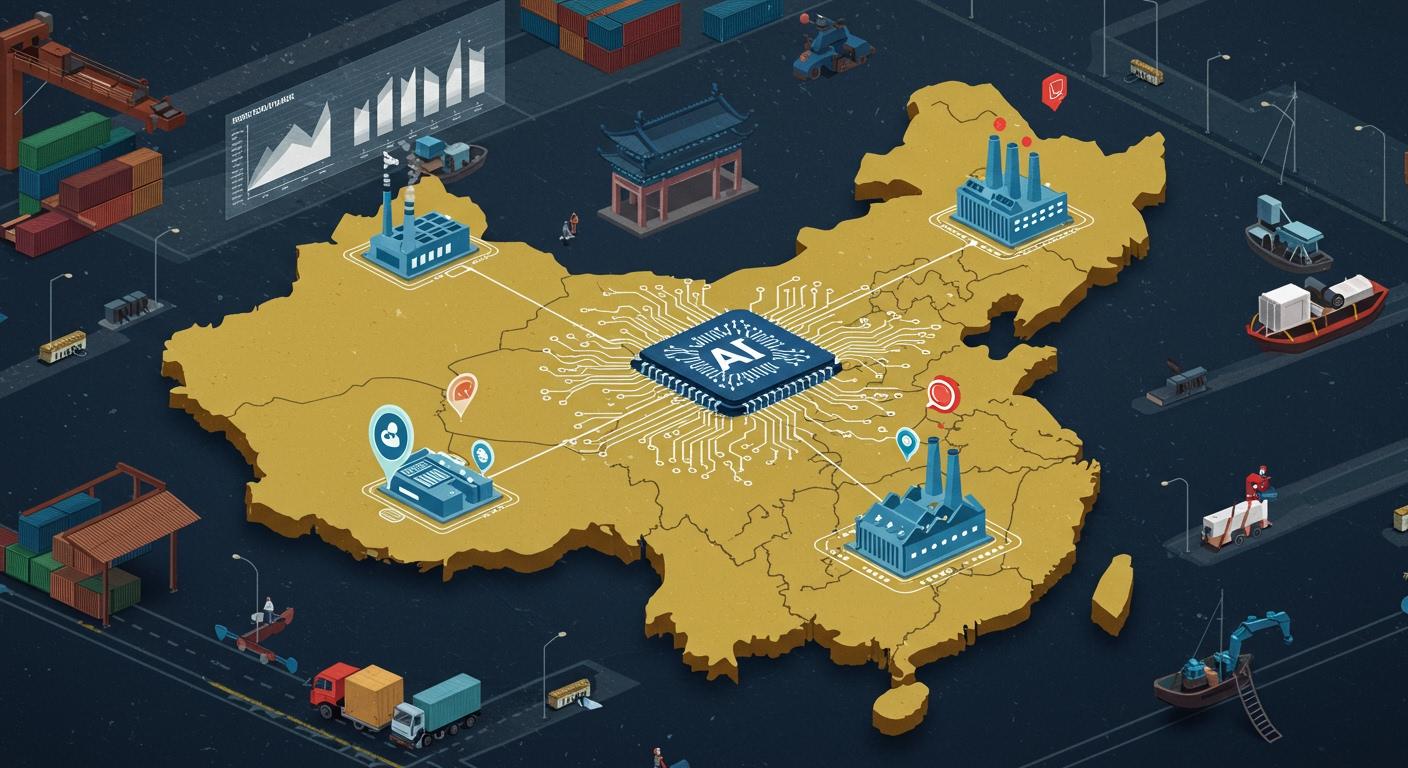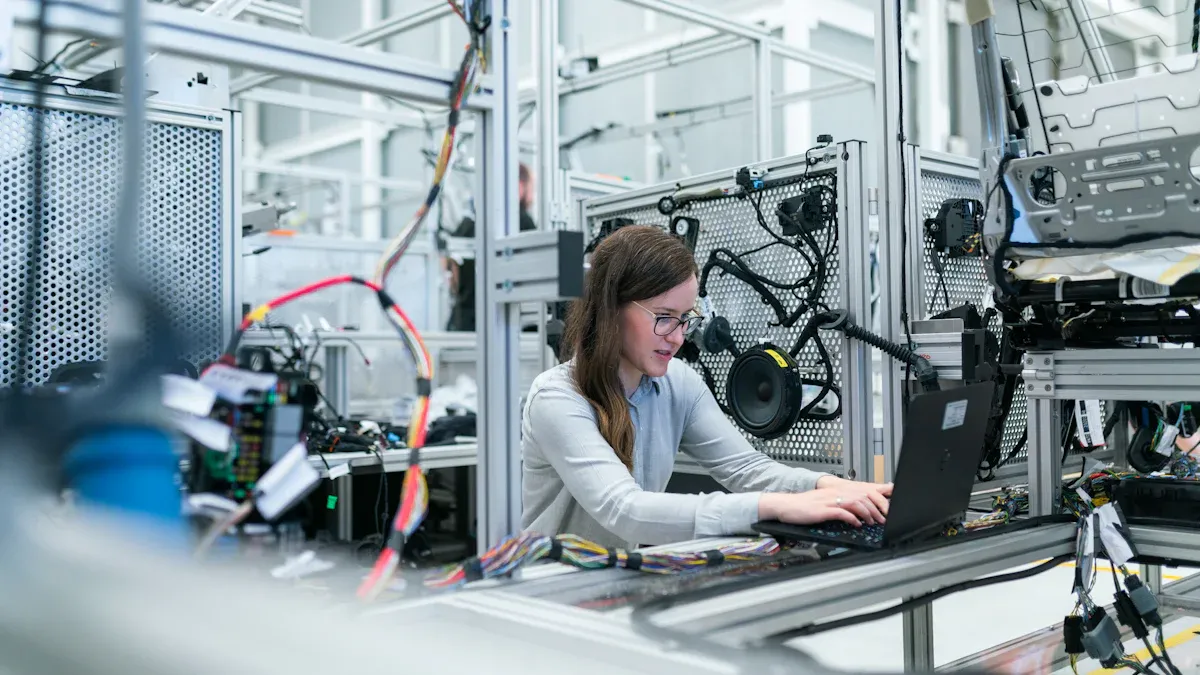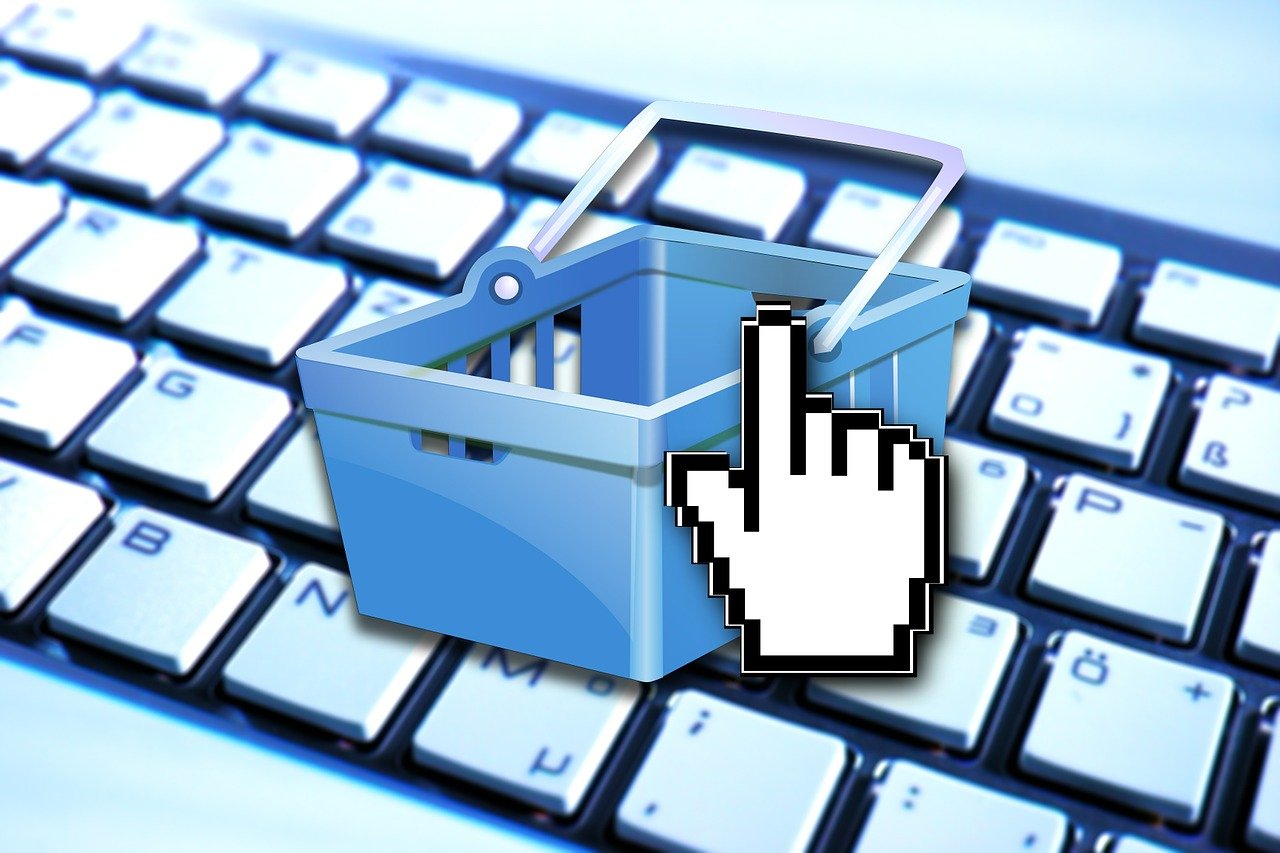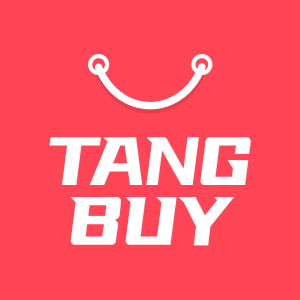How AI Uses Factory Data to Transform Supplier Sourcing in China

You can see AI changing the way you source suppliers in China. Over 83% of professionals in China use AI every day, and the country’s AI deployment grows by 37% each year. This means you get faster results, better reliability, and more choices. The Power of Factory Data lets you make smarter decisions and stay ahead in the market. You want to know how your sourcing strategy can transform—AI and real-time factory data give you the answer.
Key Takeaways
AI makes sourcing easier by doing jobs like making purchase orders and checking suppliers. This saves you time and stops mistakes.
Factory data in real-time helps you choose better. You can see trends and risks early.
AI tools help people talk to suppliers in China. They work even when people speak different languages.
Picking suppliers with good factory data and certifications like ISO 9001 means you get quality and trust.
AI helps you work well with suppliers. It lets you share important information easily.
Using AI for quality checks means there are fewer problems and returns. Customers are happier and your business does better.
Getting supplies from China locally lowers risks and costs. You get faster delivery and better control of quality.
Keep learning about new AI tools and market changes. This helps you stay ahead in supplier sourcing.
AI’s Role in Sourcing
Smarter Operations
You want your sourcing process to run like clockwork. AI makes this possible. It takes over many tasks that used to eat up your time. You can now automate purchase orders, invoices, and even supplier checks. This means you spend less time on paperwork and more time making smart decisions.
Here’s a quick look at what AI can do for you:
Function | Description |
|---|---|
Document orchestration | Automates purchase orders and invoices, identifies reliable suppliers, and streamlines workflows. |
Supplier management | Automates supplier identification, tracks compliance, and manages supplier data and risks. |
Contract and tax compliance | Ensures invoices meet tax and compliance requirements and align with contract terms. |
Predictive analytics | Analyses spending patterns to provide insights on spend data and potential supplier risks. |
AI does not just save you time. It also helps you avoid mistakes. You can trust the system to check if suppliers follow the rules and meet your standards. AI tracks compliance and keeps your supplier data up to date. You get alerts if something looks risky or out of place.
Factories in China have seen big changes thanks to AI. You can see supply chains become more flexible and adaptable. AI helps factories match supply with demand, so you do not face long waits or shortages. It also supports new ideas and better ways of working, even in industries that used to rely on manual labour.
Tip: When you use AI in your sourcing, you can spot trends and risks before they become problems. This gives you an edge over your competitors.
Bridging Buyers and Factories
AI does more than just speed up your operations. It also brings you closer to the factories you want to work with. You can now talk to suppliers in real time, even if you do not speak the same language. AI tools break down language barriers and help you understand what is happening on the factory floor.
AI helps Chinese goods reach overseas markets through cross-border e-commerce.
Platforms like 1688’s ‘Super Factory Global Edition’ make it easier for you to connect with factories and handle orders smoothly.
In cities like Shenzhen, cross-border trade is booming, with billions in sales each year.
These platforms use AI to keep up with what buyers want, so you always find products that fit your needs.
You do not have to worry about missing out on the latest trends. AI tracks what buyers want and helps factories create products that stand out. You get better choices and faster responses. This means you can build stronger partnerships and grow your business with confidence.
Note: AI-powered platforms have seen user numbers and sales grow faster than the industry average. This shows how well AI connects buyers and factories in China.
Power of Factory Data

What Is Factory Data
You may ask what factory data means. It shows how many products a factory makes each day. It also shows the checks done for quality on each item. You can see details about certifications, like ISO 9001. These show that a factory follows strict rules for quality. Factory data can include how much is made, how machines work, staff training, and energy use.
Factories in different places have special strengths. Here is a quick look at how this works:
Region | Key Industries | Advantages |
|---|---|---|
Guangdong, China | Electronics, Machinery, Consumer Goods | Mature supply chains, technical skill, fast prototyping, and mass production. |
Ba Ria Vung Tau, Vietnam | Food and Beverage Processing | Low labour costs, better infrastructure, and good export logistics. |
India | Automotive | Specialised workers and strong industry groups. |
Mexico | Aerospace | Close to US markets and strong supply chains. |
You use the Power of Factory Data to compare suppliers in these places. This helps you find which factories can give you what you need, when you need it.
Data Accuracy
Getting the right supplier needs correct factory data. If you pick a supplier with wrong or old data, you may get delays or poor quality. Many companies have problems when they choose suppliers from networks that do not check data well.
Here is what you should do:
Choose manufacturers with good records in quality control.
Look for certifications like ISO 9001 to make sure they follow quality rules.
Do not pick suppliers who cannot show proof of their production or checks.
The Power of Factory Data helps you feel sure. You know which factories meet your standards and which may cause trouble. Correct data means fewer surprises and easier sourcing.
Tip: Always ask for new certifications and recent quality reports before you order.
Real-Time vs Historical Data
There are two main kinds of factory data: real-time and historical. Real-time data shows what is happening in the factory now. Historical data shows what happened before. Both types help you make sourcing choices.
Let us compare them:
Advantage | Real-Time Data | Historical Data |
|---|---|---|
Decision-Making Speed | Quick insights for faster choices | Slow insights, may not fix current problems |
Operational Efficiency | Makes work smoother and faster | May not improve processes well |
Quality Control | Finds problems as they happen | Problems may be found too late |
Maintenance Alerts | Warns teams about issues early | Teams may fix problems only after they happen |
Feedback for Operators | Gives quick feedback on changes | Feedback is based on old results |
Data-Driven Manufacturing | Supports true data-driven work | Uses old snapshots |
You use real-time data to spot problems quickly. This helps you fix issues before they get worse. Historical data helps you see patterns and trends. You can use it to plan ahead and avoid old mistakes.
The Power of Factory Data lets you use both types. You get a full view of how a factory works. This means you make better choices and keep your supply chain strong.
Note: Factories that share real-time data often reply faster to your needs. You get updates on production, quality, and shipping without waiting.
AI and Data Analysis

Data Collection
You might wonder how AI gets its information. Factories in China make lots of data every day. AI gathers this data from machines, sensors, cameras, and workers’ reports. This helps you see what is happening in the factory.
Here is how AI gathers factory data:
Source | Evidence |
|---|---|
China Artificial Intelligence (AI) in Manufacturing Market | Lots of data from big factories helps AI models work better and learn faster. |
AI uses smart vision systems to find problems right away. These systems check products as they move on the line. You do not need to check everything by hand. Generative AI looks at production data and finds ways to save materials or fix problems quickly.
Generative AI checks data to find waste and make fast changes.
You use the Power of Factory Data to help you. This means you can trust the data and make good choices.
Tip: The more data you have, the smarter your AI gets. You get quicker and better results.
Supplier Identification
You want to find the best supplier without wasting time. AI helps by looking at lots of data from many factories. It checks things like price, delivery, and what each supplier can do. You do not have to guess or use old contacts.
AI tries different ways to help you choose the best supplier.
It checks prices, shipping, and what each factory can do.
Generative AI finds patterns, so you see which products cost more or which countries have better deals.
You get a list of suppliers that fit your needs. AI does the hard work, so you can build good partnerships and grow your business.
Note: AI can show you new suppliers you would not find alone. This gives you more choices and better deals.
Vetting and Risk
You want to stay away from risky suppliers. AI makes this much easier. It checks real-time data, market trends, and outside news to find problems before they hurt you. You get a risk score for each supplier, so you know who is safe.
Feature | AI-Powered CheckSonar |
|---|---|
Speed | Reports made in 30 seconds |
Accuracy | 99.3% correct in risk checks |
Coverage | Over 100 compliance checks |
Cost | Costs much less than old systems |
AI looks at how suppliers do and gives them a score. You can see which ones are risky and act fast. Old ways only look at past problems, but AI finds new risks as they happen.
You spot risky suppliers early.
You make better choices using real data.
By checking risk scores, you can find risky suppliers early, get better deals, and choose vendors using data.
AI also helps with predictive maintenance. It can tell when a machine might break, so factories fix it before it stops. This has cut downtime by half. Chinese factories now use more robots than anywhere else. These robots and AI work together to keep things running and cut waste by up to 30%.
You get a safer and more reliable supply chain. The Power of Factory Data and AI helps you avoid problems and grow with confidence.
Relationship Management
You want strong, lasting relationships with your suppliers. AI makes this much easier. It helps you and your suppliers work together, share information, and solve problems quickly. You do not have to rely on guesswork or slow emails. AI gives you tools to keep everyone on the same page.
AI helps you make better decisions. You can see what is happening in your supply chain at any time. This means you can plan ahead and avoid surprises. When you and your suppliers share data, you both win. You get what you need, and your suppliers know what to expect.
Here is how AI supports your relationship management:
Aspect of AI Contribution | Description |
|---|---|
Data-driven Decision-making | AI helps you make smart choices using real data. Your procurement matches your business goals. |
Improved Collaboration | AI lets you and your suppliers talk and work together more easily. You solve problems faster. |
Strategic Partnerships | AI finds ways for you and your suppliers to grow together. You spot new chances to save money or improve quality. |
AI-powered platforms let you and your suppliers share important information. You can both see demand forecasts and inventory levels. This makes planning much easier. For example, a tech company in China uses AI to give real-time updates to its suppliers. This builds trust and helps everyone work better together.
AI lets you share demand forecasts and stock levels with your suppliers.
You get real-time updates from your suppliers, so you always know what is happening.
You and your suppliers can spot problems early and fix them before they grow.
You do not have to worry about miscommunication. AI tools translate messages and keep records of every change. You can look back and see what was agreed. This helps you avoid arguments and build trust.
Tip: Use AI dashboards to track your supplier’s performance. You can see if they meet your standards and talk about ways to improve together.
AI does not just help with problems. It also helps you find new ways to work with your suppliers. You can spot trends and plan new projects. This turns your suppliers into true partners, not just vendors.
You get a supply chain that is strong, flexible, and ready for anything. AI makes sure you and your suppliers grow together.
Buyer Benefits

Transparency
You want to know what happens at every step of your supply chain. AI gives you this power. You can see how your products move through the factory in real time. You get updates on production, quality checks, and shipping. This means you do not have to guess or wait for emails. You always know where your order stands.
AI platforms show you clear records of every action. You can check who did what and when. This helps you spot problems early. If something goes wrong, you can find out why and fix it fast. You do not have to worry about hidden issues or missing information.
Tip: Use AI dashboards to track your orders and see live updates from your suppliers. This keeps you in control and builds trust with your partners.
Quality Assurance
You care about quality. AI helps you get it right every time. Factories in China use AI to watch over every part of the production process. You get alerts if something looks wrong. This means you can stop problems before they reach you.
Here is how AI improves quality for you:
AI checks products as they are made and spots defects straight away.
You get data-driven insights that help you prevent mistakes.
Quality control inspectors now work with AI as partners. They use smart tools to make better decisions.
Third-party inspection services use AI for fair and unbiased checks. This matches what you expect as a buyer.
You do not have to rely on luck or hope for the best. AI gives you proof that your products meet your standards. You can ask for reports and see the results for yourself.
Note: When you use AI-powered quality checks, you get fewer returns and happier customers.
Cost Savings
You want to save money without cutting corners. AI helps you do this. It finds ways to use less material and reduce waste. You can spot slow steps in your supply chain and fix them. This means you spend less and get more value.
Let’s look at how AI helps you save:
Area | How AI Helps You Save Money |
|---|---|
Material Use | AI finds ways to use less material and avoid waste. |
Labour Costs | Automation means you need fewer manual checks. |
Shipping | AI plans the best routes and cuts delivery times. |
Defect Reduction | Fewer mistakes mean fewer returns and less rework. |
You can compare suppliers and pick the one that gives you the best deal. AI shows you where you can cut costs without losing quality. You get more for your money and keep your business strong.
Tip: Review your AI reports often. You might find new ways to save that you did not see before.
Case Studies
You may wonder how these AI-powered changes work in real life. Here are some real examples that show how AI and factory data help buyers like you find better suppliers in China.
1. Accelerated Supplier Discovery
Think about needing a new electronics supplier in Shenzhen. Before, you would spend weeks searching and waiting for replies. Now, AI platforms give you a shortlist of good suppliers in just a few hours. The system checks thousands of factories and looks at their certifications. It matches your needs with what they offer. You save time and skip the stress of endless emails.
You type your product needs into the AI platform.
The system scans factory data like production capacity and quality records.
You get a list of suppliers who match your needs, with ratings and recent results.
2. Deep Risk Insights
You want to stay away from risky suppliers. AI tools help by giving you detailed risk profiles. For example, a clothing brand wanted to avoid factories that delivered late. The AI system checked real-time shipping data and flagged suppliers with many delays. The brand picked a factory with a strong record, and their orders arrived on time.
AI checks supplier history, compliance records, and news reports.
You see risk scores for each supplier before you choose.
You avoid costly mistakes and keep your supply chain smooth.
3. Informed Decision-Making
You need to make smart choices fast. AI gives you all the data you need in one place. A global retailer used AI to compare suppliers for a new product launch. The platform showed which factories had the right certifications, best prices, and fastest delivery times. The retailer picked the top choice and launched on schedule.
You compare suppliers side by side using real-time and historical data.
The AI highlights the best options based on your goals.
You make decisions with confidence, knowing you have all the facts.
Tip: When you use AI-driven sourcing, you spend less time searching and more time growing your business.
These case studies show that AI and factory data are not just buzzwords. They help you find better suppliers, avoid risks, and make choices that keep your business ahead.
Challenges

Data Security
You want your data to be safe. Using AI for supplier sourcing in China has risks. Not every supplier follows good security rules. Some might try to harm your system. You need to look out for these problems. Some suppliers could add bad code or change your data on purpose. Weak security at a supplier can make your whole system unsafe. You must check where your data comes from and how it is protected. If you skip these checks, you could lose important information or face cyber attacks. Always ask your suppliers about their security steps. Make sure you know how they keep your data safe. Good due diligence helps you avoid big problems later.
Tip: Ask for proof of security steps before you share any sensitive data with a new supplier.
AI Limitations
AI can do many things, but it is not perfect. In China, some limits slow down how well AI works for supplier sourcing. You might see these issues. Export controls make it hard for companies to get the best computer chips for AI. Many data centres in China do not use their AI chips fully. Sometimes, up to 80% of chips sit unused. Some companies cannot make advanced chips in China. They may try to get them in secret, which is risky and illegal. These problems mean that AI might not always work as fast or as smart as you hope. You need to know that even the best AI tools can face slowdowns or gaps in performance. Always check if your AI provider has the right tools and support.
Note: Do not rely only on AI. Keep your own checks in place to catch mistakes or delays.
Ethics and Authorship
You want your sourcing process to be fair and honest. AI can sometimes make choices that are not right. It may treat people unfairly or show bias. Here are some types of discrimination that can happen:
Type of Discrimination | Description |
|---|---|
Ethnic discrimination | Treating people differently because of their ethnicity |
Gender discrimination | Treating people unfairly because of their gender |
Age discrimination | Judging people by their age |
Nationality-based discrimination | Preferring some nationalities over others |
Regional origin discrimination | Favouring people from certain regions |
Occupation-based discrimination | Judging by job or profession |
Health-based discrimination | Treating people differently because of health status |
Monopolistic behaviour | Unfair business practices |
You need to know who is responsible for the choices AI makes. Many people play a part, such as researchers, developers, ethics boards, regulators, vendors, suppliers, and users like you. If you see unfair results, speak up. Ask your partners how they check for bias in their AI systems.
Tip: Always check AI decisions for fairness. Make sure your sourcing stays ethical and open to all.
Regulatory Barriers
You might think AI can solve every problem in supplier sourcing, but you will face some tough rules in China. These rules can slow you down or even stop your plans. You need to know what you are up against before you dive in.
China has strict controls on how you use AI. The government wants to check your algorithms before you use them. You must get pre-approval for many AI tools. This means you cannot just pick any software and start using it. You have to wait for the green light from the authorities. Sometimes, this takes weeks or even months.
Tip: Always ask your supplier if their AI tools have the right approvals. This saves you from delays and wasted money.
You also need to make sure your AI matches what the government wants. China enforces alignment with state ideologies. If your AI system does not fit these rules, you may have to change it or stop using it. This can be confusing, especially if you are new to the market.
Here are some common regulatory barriers you might face:
You must get pre-approval for your algorithms.
You need to follow rules that match state ideologies.
Some data cannot leave China, so you must store it locally.
You may need to show how your AI makes decisions.
You must keep records of how you use AI in your sourcing.
Let’s look at how these rules affect you:
Barrier | What It Means for You |
|---|---|
Pre-approval of algorithms | You must wait for government checks before using new AI tools. |
State ideology alignment | Your AI must not go against government values. |
Data localisation | You must keep your data inside China. |
Transparency requirements | You need to explain how your AI works. |
You might feel frustrated by all these steps. You want to move fast, but the rules slow you down. Some companies give up because the process feels too hard. You do not have to quit, but you do need to plan ahead.
Note: Work with local partners who know the rules. They can help you get approvals and avoid mistakes.
You can still use AI to improve your supplier sourcing in China. You just need to follow the rules and stay patient. If you plan well, you will find good suppliers and keep your business safe.
Adoption Steps
Readiness
You want to check if your company is ready for AI-driven sourcing in China. Begin by looking at a few important things. Here is an easy way to start:
Look at both AI ecosystems. Watch for new ideas and tools from China’s AI market. You may find options that suit your needs better.
Check Chinese systems. See how business models and payment ways in China are different. Some may help you source faster or save money.
Use Western and Chinese systems together. Sometimes, you need both. Western tools help with accuracy and clear records. Chinese tools give you local knowledge.
Tip: Stay interested. The more you know about both sides, the easier it is to spot good chances.
Choosing Tools
Picking the right AI tools matters a lot. You want tools that match your business and help you reach your aims. Here is what you should look for:
Criteria | Description |
|---|---|
Supplier Expertise | Pick partners who know AI-driven procurement and can find special parts. |
Certifications | Look for ISO 9001 and ISO 27001 to make sure of quality and data safety. |
Risk Management | Make sure the tool checks supply chain risks and keeps things clear. |
Technological Capabilities | Choose tools that can check chips and do on-site checks. |
Quality Verification | Find platforms that use sample tests and third-party checks. |
AI-native Quality Controls | Choose systems with computer vision for better checks. |
You should also think about:
Needed certifications and rules
Best regions for your suppliers
Your budget and how much you want to make
Choosing AI platforms that focus on procurement intelligence helps you get more value. Look for things like supplier checks, risk checks, and contract reviews. These tools help you make smart choices and save money.
Note: Tangbuy gives private labelling and strong supplier links. This means you get custom products and good support, making your sourcing easier.
Best Practices
You want your AI adoption to work well. Follow these best steps to get the best results:
Best Practice | Description |
|---|---|
Electronic RFPs | Use digital tools to send requests and get replies in one place. |
Data-Driven Negotiation | Use old data to get better deals and contract terms. |
Performance Monitoring | Check supplier performance often to spot problems early. |
Enhanced User Experience | Make sure your team gets the right data at the right time. |
Real-Time Market Tracking | Watch the market closely to manage your supply chain better. |
Tip: Start small. Try your AI tools with one product or supplier. Learn what works, then grow from there.
You can build a strong and flexible sourcing process by following these steps. With the right tools and habits, you will see better results and fewer surprises.
Future Trends

Innovation
New ideas are changing how you find suppliers in China. AI-powered platforms help you find good suppliers quickly. These platforms look at lots of data and guess what you might need next. You get suggestions for reliable suppliers without searching for hours.
Automation is making factories work smarter. You can order custom products and get them fast. Machines use AI to check if each item meets your standards. You do not need to worry about mistakes or slow work.
The Internet of Things (IoT) is also helping a lot. Factories use sensors and smart devices to watch every step. You get updates right away. This helps you spot problems early and keep things running well.
Here are some trends to watch:
AI platforms guess market trends and suggest the best suppliers.
Automation lets factories make custom products quickly and accurately.
IoT connects machines and systems, giving you better control and insight.
Tip: Stay curious about new technology. You will find more ways to improve your sourcing and stay ahead of your competitors.
Human Expertise
AI is strong, but people are still needed for the best choices. You use your skills to manage relationships and make fair decisions. AI gives you data and insights, but it cannot replace your experience.
You know your industry better than any machine. You understand the situation and can spot risks that AI might miss. Your knowledge helps you pick the right suppliers and build trust.
As AI grows, you need new skills. You learn how to read data and work with analytics teams. You use negotiation and communication to get better deals. Your ability to build strong partnerships keeps your business safe.
You should remember:
AI helps you with relationship management and strategic sourcing.
Your expertise adds context and industry knowledge that AI cannot match.
You need to learn new skills, like reading data and working with analytics teams.
Success depends on your negotiation, communication, and trust-building abilities.
Note: Use AI as a tool, but rely on your judgement and experience to make final decisions.
Local Sourcing
China is changing how it gets important supplies. More factories are choosing local suppliers. This helps lower risks from global problems. You get faster delivery and better control over quality.
Local sourcing also helps the Chinese economy. Factories build stronger ties with nearby suppliers. You benefit from lower shipping costs and fewer delays.
You might notice:
Benefit | What You Gain |
|---|---|
Faster Delivery | Shorter lead times |
Better Quality | Easier checks and control |
Lower Costs | Less spent on shipping |
Stronger Networks | Reliable local partnerships |
You can use local sourcing to make your supply chain more flexible. You respond quickly to changes and keep your business running well.
Tip: Look for local supplier options. You may find new partners who help you grow and adapt to market changes.
You have seen how AI and factory data change the way you source suppliers in China. You get faster decisions, better quality, and more control. Many supply chain leaders now use AI for planning and order management. Most expect long-term value. Here is what stands out:
AI boosts speed and insight for your sourcing.
More companies look to places like Vietnam and India as costs rise.
By 2030, AI will transform most businesses and create new jobs.
If you want to stay ahead, consider AI-driven sourcing. Tangbuy gives you the tools and support to lead in this new era.
FAQ
How does AI help you find suppliers in China?
AI checks lots of factory data for you. You get a shortlist of suppliers who match your needs. This saves you time and helps you avoid risky choices.
What is factory data and why does it matter?
Factory data shows how a factory works. You see production numbers, quality checks, and certifications. Accurate data helps you pick reliable suppliers and avoid problems.
Can you trust AI to check supplier quality?
You can trust AI to spot defects and track quality. AI uses cameras and sensors to check products. You get alerts if something goes wrong.
Is your data safe when you use AI sourcing tools?
Your data stays safe if you choose suppliers with strong security. Always ask for proof of their safety steps. Good suppliers protect your information from cyber threats.
What should you do if AI makes a mistake?
You should check AI results yourself. Use your experience to spot errors. If you find a problem, talk to your supplier and fix it quickly.
Does AI replace human judgement in sourcing?
AI helps you make decisions, but your judgement matters most. You use AI for data and insights. You decide which supplier fits your business.
How can you start using AI for sourcing in China?
Start small. Try AI tools with one product or supplier. Learn how they work. Ask for help from experts or platforms like Tangbuy.

TangBuy: A Smarter Way to Dropship in 2025
If you're looking to stay competitive with dropshipping in 2025, speed and trend-awareness are key. TangBuy helps you stay ahead with real-time product trends, fast fulfilment, and factory-direct sourcing. With over 1 million ready-to-ship items, 24-hour order processing, and seamless Shopify integration, TangBuy makes it easier to test, scale, and succeed in today's fast-moving eCommerce landscape.
See Also
Maximising Profits by Sourcing Wholesale Party Supplies Effectively
Avoiding Common Communication Errors with Your Suppliers
Locating Dependable Wholesale Jeans Suppliers for Your Enterprise
Understanding Supplier Email Silence and Solutions to Address It

